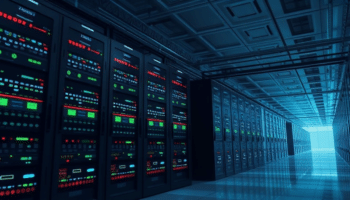The Case of the Missing RDS Instance Types
Every so often I get an AWS question that makes me roll up my sleeves and dive into some code to get the answers. This week’s question was posed by Justin Brodley from The Cloud Pod in the Last Week in AWS Slack channel: why couldn’t they purchase a reserved instance (RI) for a R8g Amazon RDS cluster? My first thought was that it might be just a bug or some weird anomaly for us-east-2 (where they found the issue), but I noticed it also was not available in other regions. Now I really had to know if this was widespread or just some weird quirk.
We recently found that EC2 Reserved Instances are being quietly deprecated. During that investigation, I wrote a small Python program to find all of the non-RI eligible EC2 instances in the AWS pricing file. Now, I’ve adapted it to find all RDS instance types that don’t support RI’s. Lo and behold, those same instance types showed up!
Let’s dive into what is going on here.
Non-RI Amazon RDS Instance Types
Looking at the full list of instance types unavailable for RDS RIs, we can put them into two distinct buckets:
- Legacy instance types that have been retired. This includes:
- M-series: m1, m2, m3, m4
- R-series: r3, r4
- T-series: t1, t2
- Newer generation instance types including:
- m7i family—released October 2024
- m8g family—released November 2024
- r7i family—released October 2024
- r8g family—released November 2024
- c6gd family—launched for RDS in March 2024, specifically for Multi-AZ deployments
AWS’s excluding retired instance families from RI purchases makes perfect sense. Why would they want you to purchase RI’s for end-of-life platforms?But looking at the newer instance types, these represent some of the most recent and powerful options in the RDS lineup. The absence of RI’s for these newer generations leads us to an important question: Is AWS simply behind on updating their RI offerings, or is something bigger going on here? AWS is forcing customers to either use the older generation instances that qualify for significant savings via RI discounts, or adopt the latest instance types and be forced to pay on-demand rates. There’s no middle ground here, and if this is the new norm, customers are going to start making crappy architectural choices to get around this.
Two Theories (And Neither Is Particularly Reassuring)
Theory 1: AWS Just Forgot
The simplest answer is that AWS simply hasn’t gotten around to adding these instance types to the RI purchase options yet. Perhaps it’s an oversight, a SIM ticket languishing in someone’s backlog, or a product manager who didn’t realize that customers might want to save money on their newest, most powerful instance types.
If these instance types had just been released, I would be more inclined to this hypothesis—just wait a little, as I’m sure they will add it soon…—but all of these instance types were added over 5 months ago at this point. If it truly is just an oversight, I’d sure hope AWS can quickly fix this for customers who surely are asking for it.
Theory 2: The Great Reserved Instance Purge Continues
The more intriguing possibility is that this is a deliberate extension of the RI deprecation strategy we’re seeing in EC2. Perhaps AWS is starting to phase out RIs across all services, beginning by simply not adding new instance types to the RI program.
If this is true, it creates a real problem for customers utilizing RDS. Going without Savings Plans or RIs will force customers to pay full on-demand pricing for their most modern database instance types. This is sure to make customers evaluate whether they should use these newer, often more efficient instance types rather than sticking with instances that can still be reserved—presumably the opposite of what AWS should want!
The RDS Savings Plan Dream
If AWS is indeed phasing out RIs for RDS, then the logical next step would be to introduce RDS into the Savings Plans framework. Corey has been harping on this for years, and I agree that it is sorely needed. Implementing this would greatly simplify commitment management for customers and allow for much greater flexibility for RDS databases. A Database Savings Plan—or better yet, folding RDS into the existing Compute Savings Plans—would be a win-win for AWS and its customers.
What now?
Hopefully the RDS team will quickly tell us what the plan is for these newer instance types moving forward. If the lack of RI options for newer instance types is affecting your planning, reach out to your friendly AWS TAM to let them know. I have seen first-hand that customer feedback really does influence product decisions—so don’t be afraid to tell them!
- Have you noticed other AWS services with missing discount options? Or have you heard anything from AWS about RDS joining Savings Plans? Let us know at [email protected] or hit us up on Bluesky!
- The Duckbill Group helps companies reduce their AWS bills. If you’re concerned about maximizing your discounts across AWS services, reach out to learn how we can help.
- We’ll be discussing this topic today at 10:00am PDT over on Duckbill’s weekly drop-in clinic. Join us.




